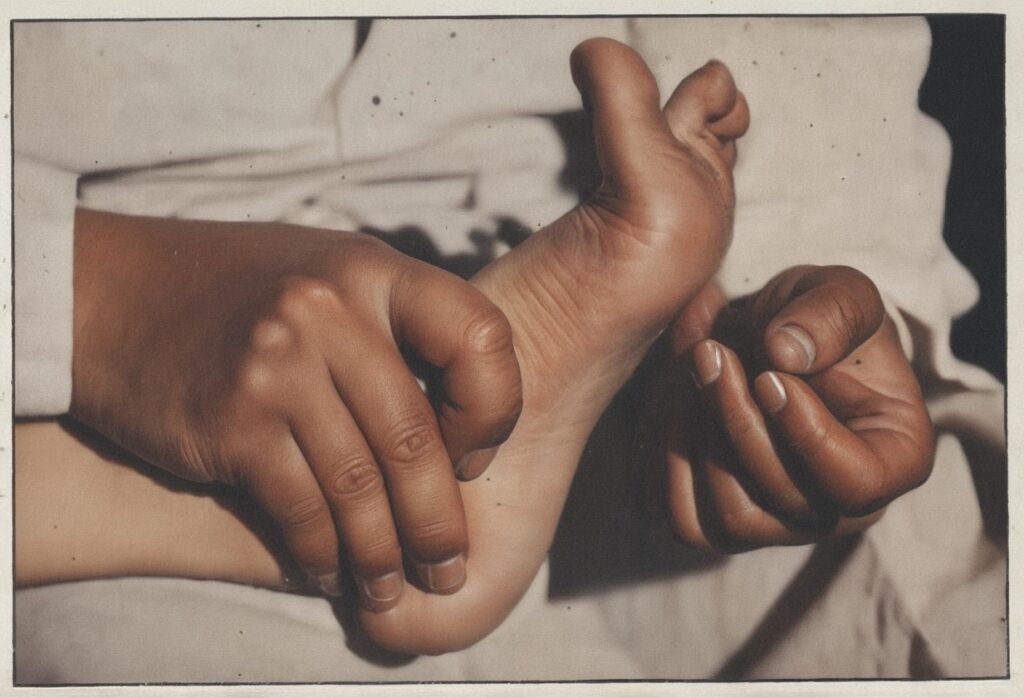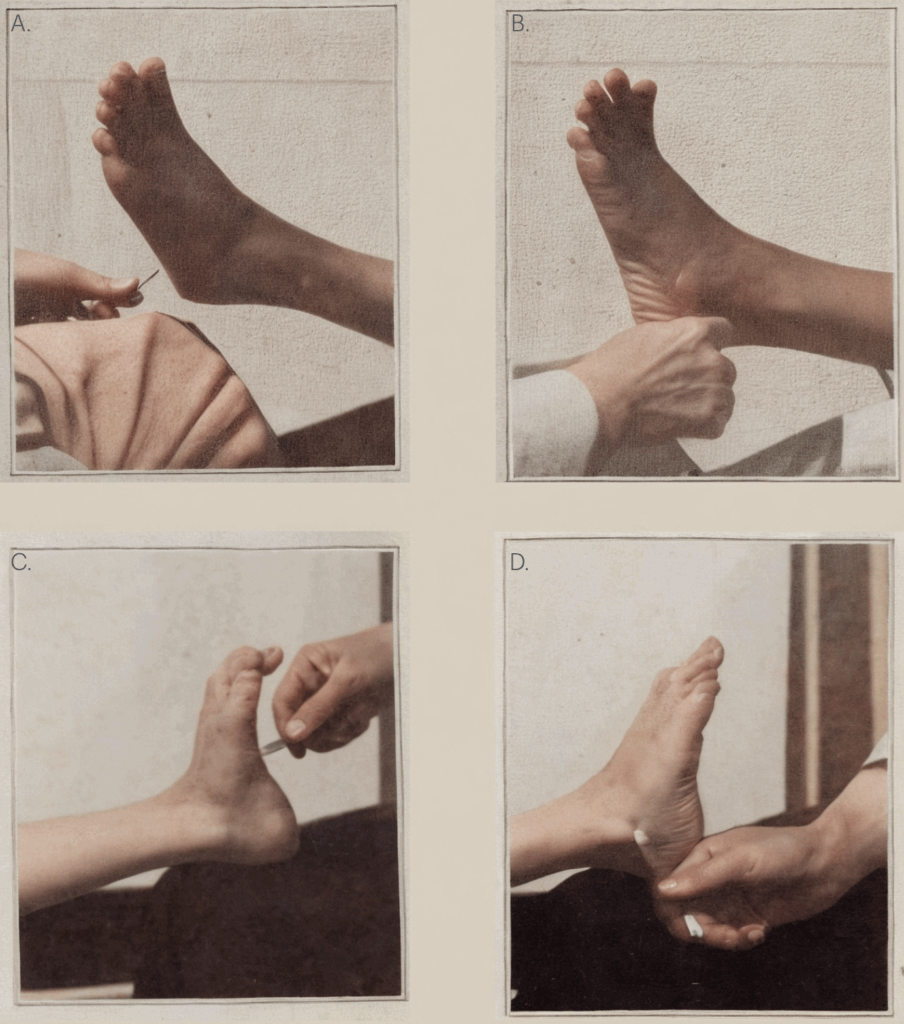Charles Chaddock

Charles Gilbert Chaddock (1861-1936) was an American neurologist, psychiatrist, poet and medical translator
In translating Richard von Krafft-Ebing’s Psychopathia Sexualis in 1892, Chaddock published in English for the first time the terms heterosexuality, homosexuality and bisexuality
Eponymyously remembered for his 1911 papers on the ‘external ankle
sign’ (Chaddock sign), an alternative/complementary test to the Babinski reflex and the analogous Chaddock wrist sign (1912)
Biography
- Born November 14, 1861 Jonesvile, Michigan
- 1885 – MD, University of Michigan College of Medicine and Surgery
- 1886 – staff physician at Northern Michigan Asylum, Traverse City
- 1888-1889 studied in Munich, Germany
- 1890-1892 Assistant Superintendent of the Asylum, Traverse City State Hospital
- 1893-1897 Professor of Nervous and Mental Diseases at Marion-Sims College, St. Louis
- 1897-1899 studied in Paris under Joseph Babinski (1857-1932); subsequently returning for long summers in 1902-1903, 1908-1909, 1913, and 1921; influenced by the then current problem of differentiating between the organic and functional manifestations of the nervous disease
- Died July 20, 1936
Medical Eponyms
Chaddock sign (1911)
1896 – Babinski described an extensor toe response that he claimed was a consistent finding among patients with pyramidal tract lesions of the cortex, subcortex, brain stem, or spinal cord. He considered it a distinct sign of organic disease and found it to be absent in cases of hysterical weakness

1911 – Chaddock (like Babinski)was interested in identifying signs on neurological examination to help separate neurological from psychiatric illnesses. He presented made a preliminary communication to the St. Louis Neurological Society, on May 29, 1911. A modification of the Babinski sign where stimulation of the lateral surface of the foot could induce toe extension in patients with pyramidal tract lesions.
Chaddock described the most sensitive area for eliciting his external ankle sign as overlying a slight depression just in front of the lowest point of the external malleolus and behind the tuberosity of the cuboid.
He believed his sign to have the significant advantage of minimising dorsiflexion of the foot as a withdrawal reaction to noxious stimulation
I have found the extension of one or more or all of the toes with or without fanning of them when the external inframalleolar skin is irritated in cases of organic disease is a spinal cortical reflex path. I shall call it the ‘external malleolar sign‘

Babinski and Chaddock reflexes can each can occur without the other, although both are usually present in cases of pyramidal tract impairment. The Chaddock sign can be employed when the patient exhibits a significant withdrawal response to plantar stimulation when performing the Babinski reflex
Chaddock wrist sign (1912)
In 1912, Chaddock first published his wrist sign in the Interstate Medical Journal. He sought a skin area upon the wrist which would correspond to the external inframalleolar skin. He found that scratching the skin to the ulnar side of the palmaris longus and flexor carpi radialis tendons caused a brief contraction
of the hypothenar eminence in normals, and the pathological sign to develop in conditions with uni- or bilateral involvement of the motor paths.
In toto the latter consisted of active flexion of the wrist, some spreading and extension of the fingers, and approximation of thenar and hypothenar eminences, the latter brought about more particularly by adduction of the base of the thumb
Chaddock believed that when the pathological wrist sign occurred in association with the isolated
ankle sign upon the same side, it indicated a disturbance of the pyramidal tract

Major Publications
- Chaddock CG. An experimental study in the domain of hypnotism. 1889 [Authorised translation: Krafft-Ebing, R. von. Eine experimentelle Studie auf dem Gebiete des Hypnotismus]
- Chaddock CG. Psychopathia sexualis, with especial reference to contrary sexual instinct: a medico-legal study. 1892 [Authorised translation: Krafft-Ebing, R. von. Psychopathia sexualis, mit besonderer Berücksichtigung der conträren Sexualempfindung. Eine klinischforensische Studie]
- Chaddock CG. Text-book of insanity, based on clinical observations for practitioners and students of medicine 1904. [Translation of Krafft-Ebing, R. von. Lehrbuch der Psychiatrie auf klinischer Grundlage für practische Aerzte und Studierende]
- Chaddock CG. A preliminary consideration concerning a new diagnostic nervous sign. Interstate Med J 1911; 12: 742–746.
- Chaddock CG. The external malleolar sign. Interstate Med J 1911; 13: 1026–1038
- Chaddock CG. A new reflex phenomenon in the hand: the wrist-sign. Interstate Med J 1912; 19: 127–131 [Chaddock wrist sign]
- Chaddock CG. Early diagnosis in tuberculosis of the nervous system. Interstate Med J 1914; 21: 333-340
- Chaddock CG. Translation of J Babinski: tendon reflexes and bone reflexes: an authorized translation. Interstate Med J 1914; 21: 75–84, 178–185, 585–594, 1047–1054
- Chaddock CG. Some cutaneous and deep reflexes of the arm and hand. Journal-Lancet 1936; 56: 38-39
References
Biography
- Charles Gilbert Chaddock MD. J Nerv Ment Dis. 1936; 84: 495
- Charles Gilbert Chaddock. JAMA. 1936;107(9):729
- O’Leary JL, Moore WL. Charles Gilbert Chaddock, his life and contributions. J Hist Med Allied Sci. 1953 Jul;8(3):301-17.
Eponymous terms
- Lyter JC. Multiple adenocarcinomata of the brain. The Medical Clinics of North America 1924; 7(5): 1583-1586 [Chaddock wrist sign]
- Goetz CG. History of the extensor plantar response: Babinski and Chaddock signs. Semin Neurol. 2002 Dec;22(4):391-8.
Eponym
the person behind the name
BA MA (Oxon) MBChB (Edin) FACEM FFSEM. Emergency physician, Sir Charles Gairdner Hospital. Passion for rugby; medical history; medical education; and asynchronous learning #FOAMed evangelist. Co-founder and CTO of Life in the Fast lane | On Call: Principles and Protocol 4e| Eponyms | Books |
